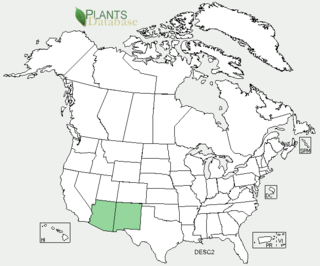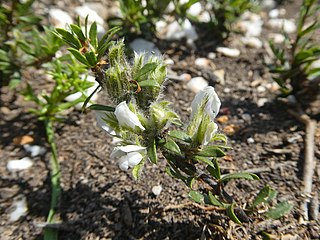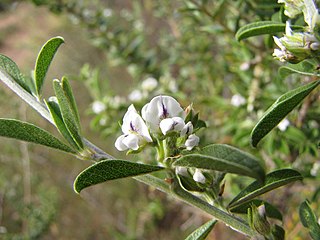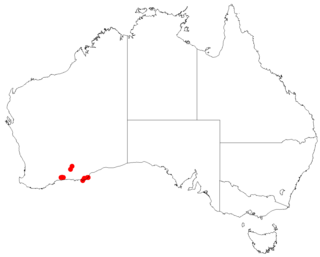
Adonis is a genus of about 20–30 species of flowering plants of the crowfoot family, Ranunculaceae, native to Europe and Asia.

Rudbeckia fulgida, the orange coneflower or perennial coneflower, is a species of flowering plant in the family Asteraceae, native to eastern North America.
Echinacea atrorubens, called the Topeka purple coneflower, is a North American species of flowering plant in the family Asteraceae. It is native to eastern Kansas, Oklahoma, and eastern Texas in the south-central United States. It is found growing in dry soils around limestone or sandstone outcroppings and prairies.

Thalictrum dioicum, the early meadow-rue or quicksilver-weed, is a species of herbaceous plants in the family Ranunculaceae. Plants are typically upright growing woodland natives from Colorado Rocky Mountain forests to central and eastern North America including parts of south eastern Canada. This species has dioecious plants, with male and female flowers on separate plants blooming in early to mid spring.

Coreopsis basalis, the golden-mane coreopsis, is a North American plant species in the sunflower family. It is native to the southeastern and south-central United States from Texas to the Carolinas. Isolated populations have been reported from Connecticut, Illinois, and California.

Delphinium scopulorum, commonly known as Rocky Mountain larkspur, is a species of wildflower in the genus Delphinium, which belongs to the buttercup family, Ranunculaceae. It is native to the Southwestern United States and found predominantly in upper-elevation moist meadows.

Dianthus balbisii is a herbaceous perennial plant of the genus Dianthus of the family Caryophyllaceae. The genus name Dianthus derives from the Greek words for divine ("dios") and flower ("anthos"), while the species name balbisii honors the Italian botanist Giovanni Battista Balbis (1765–1831).

Lobelia anceps, commonly known as angled lobelia, is a small herbaceous plant in the family Campanulaceae it grows in several states of Australia, New Zealand, South America and South Africa. It is a small, perennial herb with blue to purple flowers.

Streptanthus hyacinthoides is a species of flowering plant in the mustard family known by the common name smooth jewelflower. It is found in Texas, Arkansas, Oklahoma, Louisiana and Nebraska, occurring in prairies, grasslands, and roadsides. The specific name hyacinthoides is Greek, referring to the resemblance of the species to the genus Hyacinthus, and the common name "smooth jewelflower" refers to the glabrous stems of the plant.

Passiflora bogotensis is a climbing plant native to Colombia, in the genus Passiflora. It can also be found in Venezuela.

Pelargonium coronopifolium is a subshrub of up to 40 cm high. It has green to slightly greyish, linear to narrowly elliptical leaves often with irregular teeth towards the tip and white to purple flowers in groups of one to four. It can be found in the Western Cape province of South Africa. Old publications suggested the name buck's horn plantain-leaved stork's bill, but this name never gained common use.

Trollius yunnanensis, the Yunnan globeflower, is a species of globeflower, native to southern China; Gansu, Sichuan and Yunnan provinces, and to northern Myanmar. A perennial, it prefers to grow at elevations from 1,900 m up to 3,900 m on grassy slopes and wet meadows. It has gained the Royal Horticultural Society's Award of Garden Merit.

Symphyotrichum racemosum is a species of flowering plant native to parts of the United States and introduced in Canada. It is known as smooth white oldfield aster and small white aster. It is a perennial, herbaceous plant in the family Asteraceae. It is a late-summer and fall blooming flower.

Otholobium curtisiae is a small spreading shrub assigned to the Pea family. All green parts are covered in hairs and urn-like glands. It has many woody stems, small and somewhat succulent, dark green alternately set clover-like leaves and heads consisting of 3-9 white, pea-like flowers on very short peduncles in the axils of the leaves. This species is an endemic of the Overberg area in the Western Cape province of South Africa. It mostly flowers in August and September.
Otholobium dreweae is an upright shrublet assigned to the Pea family of about 15 cm (5.9 in) high, that appears after the vegetation burned down from the underground rootstock and forms mat-like clumps of hardly branching, leafy stems. The stems are set with stiff, entire, alternate leaves with a single leaflet and heads consisting of 12-18 initially dark pink, later white, pea-like flowers with a white nectar guide on a peduncle as long as the leaves at the end of the stem. This species is an endemic of the Kleinrivier Mountains in the Western Cape province of South Africa. It mostly flowers in November.

Otholobium spissum is a dense, tangled, much branched shrub of up to 185 cm (73 in) high that is assigned to the Pea family. It has dull green, clover-like leaves and white, pea-like flowers with a streaky, triangular, purple nectar guide. The species grows in renosterveld in the central mountains of the Western Cape province of South Africa. This species flowers in July and August.
Hedinia is a monotypic genus of flowering plants belonging to the family Brassicaceae. It only contains one known species, Hedinia tibetica.
Parlatoria is a monotypic genus of flowering plants belonging to the family Brassicaceae. It just contains one species, Parlatoria cakiloideaBoiss.
Zanthoxylum esquirolii is a woody plant in the family Rutaceae from Guizhou, Sichuan, and Yunnan China.

Leucopogon bossiaea is a species of flowering plant in the heath family Ericaceae and is endemic to a restricted area in the south-west of Western Australia. It is an erect shrub with elliptic to broadly egg-shaped leaves and white flowers in four to eleven upper leaf axils.















